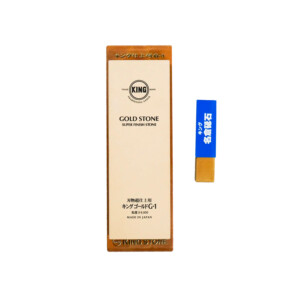Online shopping is the most convenient way to shop around, find the best prices, read customer reviews before making a decision and once you do make it, you can have your order delivered right to your doorstep without ever having to leave the comfort of your own home. Many online retailers also offer free shipping and easy returns, which can further enhance the convenience of shopping online.
However, there are certain steps you should take to make sure you have a safe, positive and a smooth shopping experience. You’ll want to be sure that products arrive on time, that quality is what you expected, that items include a proper warranty in case something breaks, and that there is an easy way for you to return products or get support with any questions you have. In today’s article we’ve prepared a list of aspects that you should consider to improve the security of your shopping experience. Here they are:
1. Vet new-to-you businesses
Know the merchant and their reputation. If you already know the store and purchased from them in the past or had friends you did, you’ll naturally have a higher trust in them that things will go well with your purchase and you can be reassured of the site’s quality. If, however, you’re thinking of shopping of an unknown brand, do your homework prior. Look for online reviews on third-party platforms like TrustPilot or Google Reviews, and search the internet about the brand for complaints. There are platforms that analyse site activities and presence for scam probability. One that we always recommend is ScamAdviser that has been on the market for more than 10 years. Check if any established industry magazines have written articles about the company you’re planning to purchase from. Usually such media outlets do their own internal investigation on a company’s profile they cover. A good idea is also to check the “Contact Us” page on the shop’s website for an address and phone number. Online shops do not always provide a contact number to call, but if yours have it – use it and call the support to verify. They may also not have a physical store which you can go and visit. May such shops (like Oishya) ship from a warehouse that is not open to outside public. This is due to keeping the costs as low as possible and passing the savings on the end customer (Brick and mortar fixed costs often contribute to 10-30% higher item prices comparing to an online shop). That being said, the company needs to provide a physical communication address where you can send your complains etc, should you need to.
New, aspiring brands that care to establish trust tell their founding story on “About Us” – like page. Buying from an unknown brand doesn’t immediately mean that it’s a risky thing to do, but you need to make your research to see if there is a real team of passionate, good willing people behind the brand you just heard of.
2. Check if a shop has a good customer support
Just like you can just walk into the local store for help if there’s a problem, you should be able to contact support when making an online purchase. Like we said before, online shops do not always provide a contact number to call, but that’s not a warning sign per se. However, you should be able to contact support team of such company via other means; if a company has social media profiles such as Instagram or Facebook, send them a message and see if they respond. The most universal way of contacting support is of course sending an email address, that usually is shown in a “Contact Us” page or in the footer of the page.
3. Always place orders from a secure connection

Before entering any personal or credit card info onto a shopping site, see if the web address on the page begins with “https:”, not “http:” That little ’s’ tells you the website is secure and encrypted to protect your information. You can also see if the site is encrypted if it has a closed ‘padlock’ icon by its website address within your browser. When you click on the icon, you will be able to see more information about the security certificate.
Second thing to consider is your computer firewall and antivirus software. If your computer isn’t protected from potentially malicious software, your financial information and passwords are at risk from being stolen (and everything else you store on your computer or do online). This concept is so basic, yet only a fraction of the population adequately protects their computers. Also, if you’re shopping online while using a wireless network, it needs to be encrypted so someone who is lurking outside the house can’t collect your information. Avoid making any financial transactions when using a public network, as you may not know if it’s compromised.
4. Avoid offers that seem “too good to be true”
If it sounds too good to be true, it’s too good to be true. Any eCommerce site that promises too much at too low a price is suspicious. If the price is too low, consider whether the merchant came by the items legally, if you will ever receive the items you paid for, whether the items are actually the brand shown or a cheap substitute advertised as something of high quality. Look for the stores that offer a smooth money back guarantee if you’re not satisfied with the product you’ll receive. Companies that are confident about the quality of the products they sell sometimes provide a lifetime warranty (we at Oishya do that for all of the items that we supervise, design and make. The exception is e.g. whetstones). Disreputable online stores – like their brick and mortar counterparts, may run an absurdly low price offer and then claim the item is out of stock, to try to sell you something else in a classic “bait and switch” scam.
5. If you are buying a gift card, read the Terms and Conditions
If the gift card is for someone else, be sure the store is legitimate, that the person uses the store, and that there are no hoops they will have to jump through.
6. Don’t use an online store that requires more information than necessary to make the sale
Expect to provide some method of payment, shipping address, telephone number, and email address, but if the seller requests other information, walk away. You never want to give them your bank account information, social security information, or driver’s license number. Asking for date of birth is often a legal requirement e.g. when you’re selling dangerous goods or goods available only to those over 18 years old.
Some companies ask questions about your interests to better understand your purchasing intent and serve you better in the future, but these should always be optional. Look for the information on how protected is your information. EU has enforced a very strict management of personal data under the GDPR regulations. Does the merchant resell, rent, or share your information? Check the site’s privacy policy to understand how exposed your information may become. Many stores clearly state that they do not share, sell or rent consumer’s information, but that’s not always the case. Stick to the companies that respect your privacy and won’t compromise it.
7. If you need to create a password for the site – make it unique
You will often be asked to create an account with a password when you make a purchase. Usually, you can choose not to do this, and unless you will use the store frequently, you don’t create an account. You should be able to check the status of your order just by providing an email address you used to make a purchase.
If you do want an account, make sure to use a unique and strong password. When creating such password:
- Use a complex set of lower and uppercase numbers, letters, and symbols. Or consider a long passphrase that you can remember and others are unlikely to guess.
- Avoid dictionary words and personal information a thief could easily find or guess, like your kid’s birthdate, your dog’s name or your favourite sports team.
- Never reuse passwords across sites. If you do, a data breach at one company could give criminals access to your other accounts.
8. Use a Credit Card or PayPal
When you’re buying from a low trusted, unknown brand, do not use a debit card or check as these do not have the same security protections in place for you should a problem arise.
Credit card purchases limit your liability to unauthorised charges if your financial information is stolen, and the money in your bank account is untouched. Some debit cards do not offer this protection – and even when they do, you’re the one out of funds in the meantime. Consider designating one credit card or virtual card that is only for online shopping and transactions. This way, if the card gets compromised, you can quickly shut it down without impacting any other type of transactions. You can also opt for paying via escrow system such as PayPal, that protects your money should a purchase gone wrong.
9. Always check the company’s shipping terms.

Some merchant’s charge exorbitant shipping fees that can turn a shopping bargain into an expensive mistake. Look to see if they provide tracking and insurance. Understand what carriers they use, and be cautious if the item won’t be shipped within 10 days. There are of course exceptions such as when a store offers handmade products, but information about buying as backorder (pay now, get the item once it’s made and ready to ship) should be clearly visible on each step of the purchase.
10. You can’t win a contest you didn’t enter.
Don’t respond to emails and messages claiming you’ve won money or goods, unless it’s a contest that you actually entered. There are many contest scams that typically require you to make a “small” payment to “claim” your prize or provide personal information. They’re almost always scams.
11. Don’t fall for phishing attacks.
Be very careful before clicking on a link (even if it appears to be from a legitimate site) asking you to log in, change your password or provide any other personal information. It might be legit or it might be a “phishing” scam where the information you enter goes to a hacker. When in doubt, log on manually by typing what you know to be the site’s URL into your browser window. Here, always look for the information on secure connection that we mentioned in point 3 – the site is encrypted if it has a closed ‘padlock’ icon by its website address within your browser. When you click on the icon, you will be able to see more information about the security certificate.





























